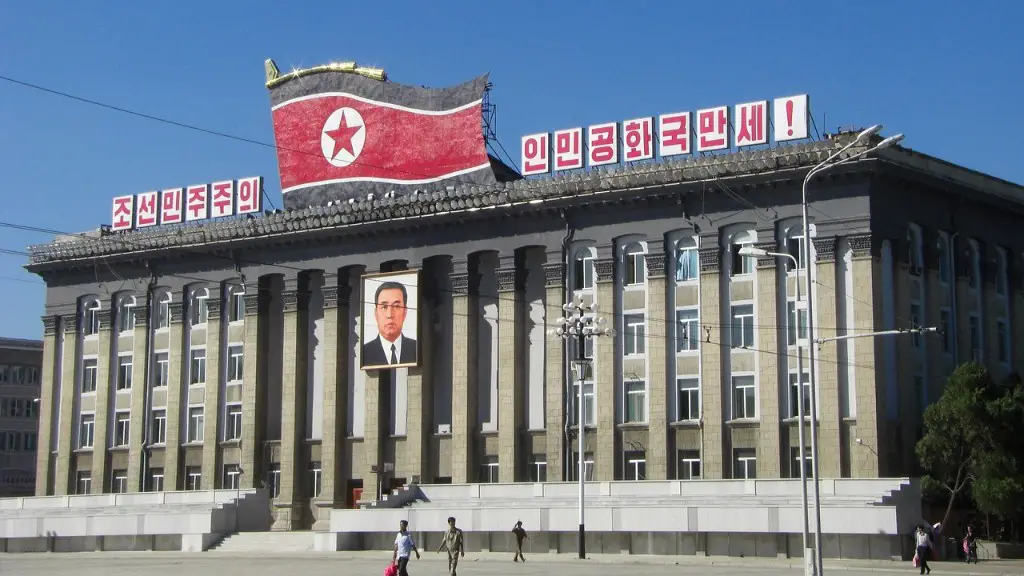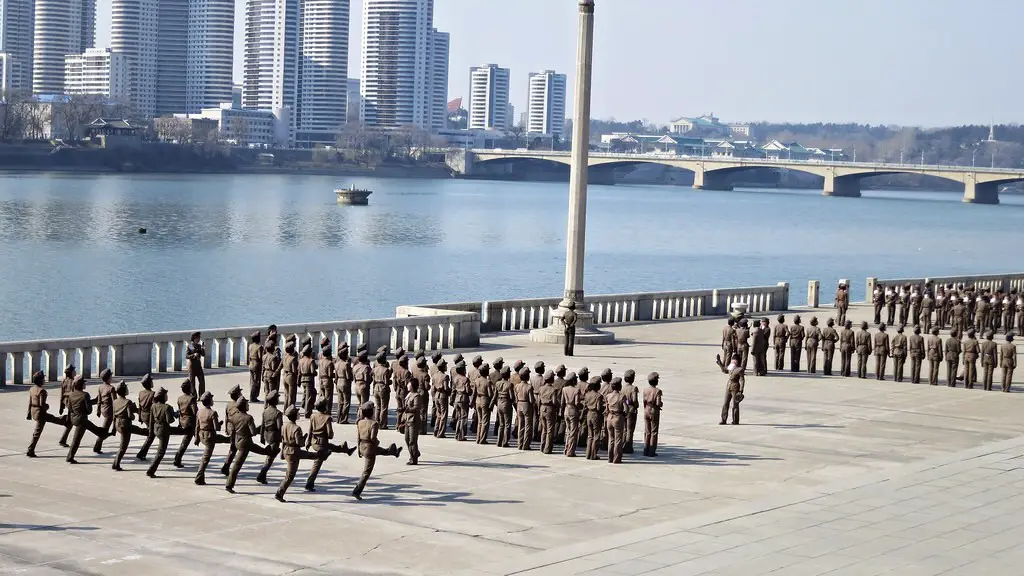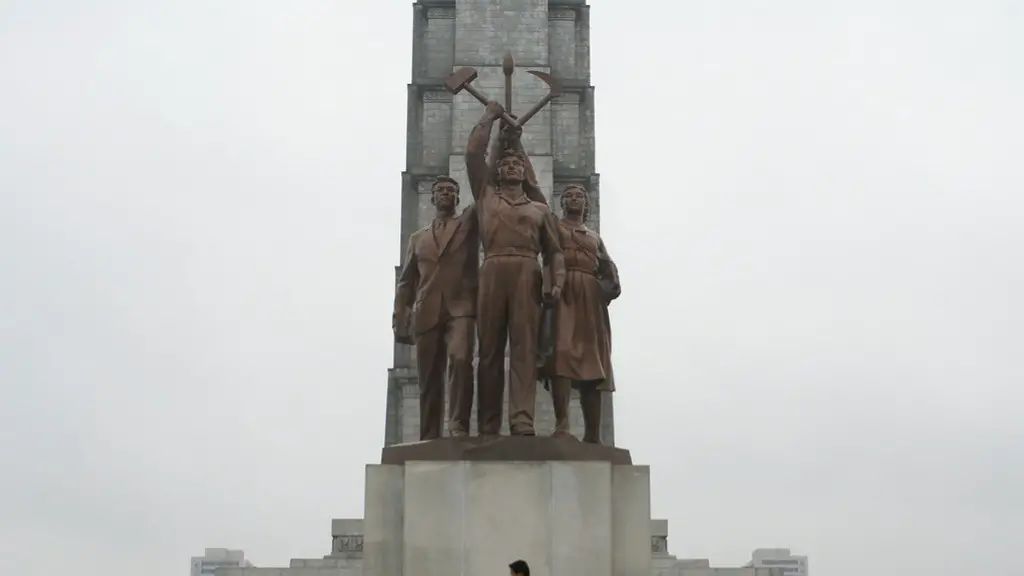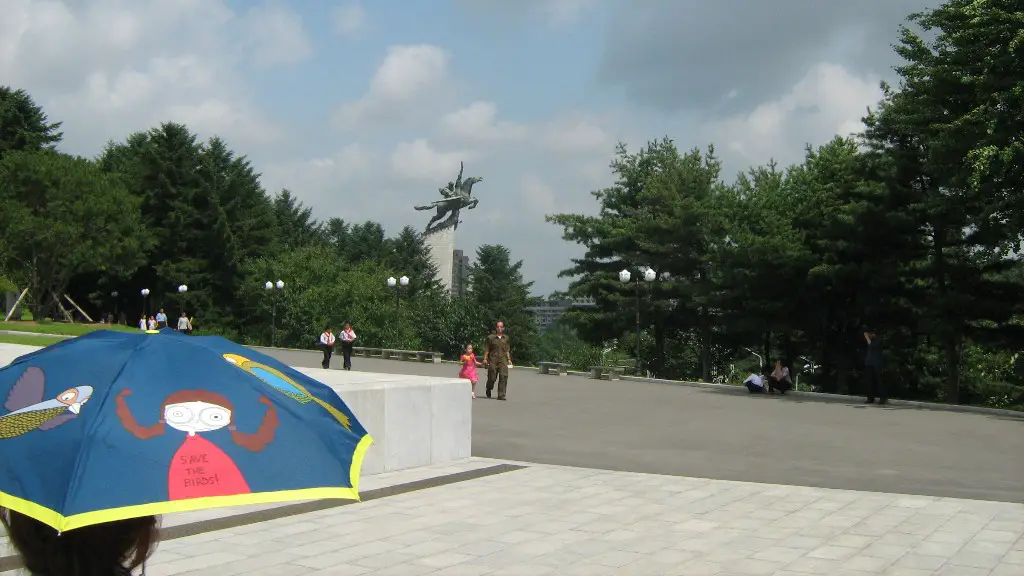North and South Korea have been divided for over 70 years. Nearly three million people — many of them family members — have been separated since the end of the Korean War in 1953. The separation has been described as one of the most potent and emotional legacies of the Cold War, with countless families divided and countless lives affected. Over the years, negotiations have been held but no agreement has been reached to reunite the two Koreas, leaving many to wonder why the separation continues.
North Korea has been identified as one of the most isolated countries in the world. The country’s leadership has long been hostile to the outside world and committed to maintaining a hermetic economy and society. The militaristic North Korean regime is highly repressive and has refused to engage in dialogues with the South, instead choosing to pursue aims of self-reliance and strengthening its own sovereignty. Such policies in the North have resulted in poverty, famine and human rights violations.
South Korea, by contrast, is a vibrant democracy. The country is home to a strong, albeit still fragile, economy. South Korea is seen as a major economic and security player in the region, and since the end of the Korean War, the country has built itself into a modern, advanced society and a model economy of the East Asian region. This success has been propelled by policies of engagement with the rest of the world, seeking diplomatic and economic exchanges with countries around the globe.
The refusal of North Korea to engage in talks and reach reunification renders the situation intractable. North Korea’s fear of external interference, combined with its persistent nuclear weapons development and huge military, leaves South Korea and its allies without an opening to promote peace. North Korea’s refusal to compromise further damages the chances of reconciliation, effectively putting a wall between North and South Korea.
The situation faces further complications, with the US and other external powers. US President Donald Trump has broken decades of US policy by engaging with the North and favouring diplomacy over sanctions, yet it’s unclear whether a breakthrough can be achieved, or whether talks will dissolve altogether. Underlying this all is a deep sense of mistrust between the US and North Korea, further disrupting any hope for reunification.
Ultimately, North and South Korea are still divided, and it’s uncertain whether the far-reaching political, economic and ideological differences between the two countries can ever be resolved. However, there is hope that the strong identification that both nations feel with their respective sides may one day be used to catalyze constructive talks and progress towards reunification.
Internal Political Divides
The two Koreas operate under vastly different political systems and ideologies, resulting in deep political divides between North and South Korea. North Korea is an isolated, totalitarian state which is ruled by the Kim family dynasty and its accompanying political party, the Korean Worker’s Party. South Korea is a vibrant democracy with a strong economy, ruled by a succession of reasonably transparent governments.
These differences are deeply entrenched and are the source of immense tension between the two Koreas. The North sees the South’s democracy as a threat to their rule; the Kim family have long seen their own regime as superior and assert that any attempt to reform their system is a trespass on their sovereignty. South Koreans, in turn, consider North Korea’s dictatorship illegitimate, creating a huge divide between the two nations.
The lack of consistency on policy has been viewed as a major hindrance in achieving reunification of the country; since negotiations for reunification started in the 1970s, there have been five changes in presidency in South Korea alone, making it difficult to form and maintain concord between the two nations.
The two sides have engaged in multiple negotiations in the past, yet they remain deeply divided in terms of opinion and interests, making it almost impossible to find an agreed-upon solution to reunification. The South, meanwhile, is highly skeptical of the North’s repeated attempts at dialogue which they fear may be used to achieve personal political objectives.
Economic Impact
The two Koreas remain divided along purely economic lines, with the North still struggling under poverty and international sanctions, while the South remains the fourth-largest economy in Asia. This economic disparity has left a stark divide between the two nations, both in terms of trade and investment, and investment opportunities.
The South’s rapidly accelerating economy has seen its GDP growth rate nearly double since the start of its transition to democracy – for the last 10 years, its economy has grown four times as quickly as North Korea. It has also seen rapid urbanization and the emergence of new industries, ranging from high-tech manufacturing to tourism. This has pushed the South’s overall development far ahead of the North while leaving the North lagging behind.
The potential cost of reunification has long been a deterrent to the two sides. North Korea’s reckless and unmonitored economy has yet to experience the stability needed to make reunification feasible, leaving South Korea bearing the brunt of any further improvements to North Korean living standards. Such a large cost of transition leaves both sides hesitant to move forward with discussions of reunification.
The cost of reunification is further complicated by the lack of shared infrastructure, resources and industry between the two Koreas, meaning the South would have to invest an unprecedented amount of money into modernizing the North’s underdeveloped cities and industries. This comes at the expense of South Korea’s own economic health and could have a long-term detrimental impact on the country. It is no wonder then, that at present, talks of reunification of the two Koreas remain stalled and unmotivated.
Security Concerns
The two Koreas are in a fundamentally different security situation. North Korea’s development of nuclear weapons has made it one of the most heavily armed nations in the world and its continued threats of armed aggression has left South Korea under constant alert. South Korea, meanwhile, has been a member of the US-led United Nations Command since the Korean War, exemplifying its close ties to the US and its allies.
The US presence in South Korea has been seen as a major obstacle to reunification. The US regards the North as an international security threat and thus its presence in South Korea serves as a deterrent to any prospects of uniting the two Koreas. Moreover, US military intervention would be seen by the North as a direct attack on its sovereignty and its rule of the region, making reunification seemingly impossible while the US maintains such a strong presence.
The security situation between North and South only becomes further complicated when considering the issue of North Korea’s nuclear weapons programme. The North’s behaviour has been heavily criticized by the international community, and sanctions imposed on the country by the UN have weakened the North’s economy and aggrieved its people. Reunification of the two Koreas would require the North to give up its nuclear weapons and end its hostile behaviour; a notion which North Korea is highly unlikely to accept.
The differing security expectations and interests of North Korea and its neighbours have caused a stand-off which, for now, looks to be unresolvable. Any attempt to reunify the two Koreas is likely to face immense security challenges, and likely to take decades to reach a meaningful outcome.
Military Presence
The military presence of both sides has been a major impediment to reunification. North Korea has a substantially larger and better-equipped military, with almost 1 million personnel, 700 combat jets and thousands of tanks and armoured vehicles compared to the South’s 500,000 combatants, 180 combat jets and 2000 tanks and armoured vehicles.
The North has sought to consolidate its military presence by increasing troop numbers, while the South has refused to increase its military numbers, as it is wary of potential conflict. With their dramatically different military abilities, the two sides are unlikely to reach a mutual understanding, exacerbating tensions and damaging the prospects of reunification.
North Korea’s pursuit of nuclear weapons has further increased the level of risk and instability in the region, prompting the South to strengthen its own military presence in a bid to remain competitive with the North. This has placed greater pressure on the South to remain ready for military action, further reinforcing the stand-off between the two Koreas.
The presence of a multitude of foreign forces on each side of the border also presents a further barrier to reunification. The presence of the US and its allies in South Korea is seen by the North as an obstacle to reunification, while the presence of Chinese forces in the North is seen by the US and the South as a threat to their security. In an effort to reduce the presence of foreign forces, the two Koreas have agreed to reduce the size of their militaries, yet this gesture has done little to improve diplomatic relations.
Diplomatic Challenges
The diplomatic approach between the two Koreas has seen numerous ups and downs. North Korea has repeatedly used its nuclear weapons capabilities to pressure the South and its allies into offering concessions in the form of aid, yet the South and its allies have been unwilling to give in to these threats. Instead, they have prioritized sanctions and containment as their preferred approach, refusing to entertain any notion of providing aid to the North.
At times, the two Koreas have seen openings for negotiation, and have engaged in dialogue under the 1994 Agreed Framework and the 2000 Sunshine Policy. The agreements have seen both sides commit to non-aggression and engage in talks of reunification, yet both initiatives have been short-lived, collapsing during moments of heightened tensions.
North Korea’s unwillingness to cooperate has made the situation worse, leading to levies of international sanctions against the isolated nation. The already limited ties between the two countries have been further choked by the imposition of UN Security Council sanctions, while Pyongyang’s recalcitrance has led to further punitive measures on the North.
The international community’s failure to bridge the divide between the North and the South continues to pose a challenge to the prospects of reunification. International actors are currently unable to agree on an approach to reunification, further dragging out the process as compromise remains out of reach.
Conclusion
North and South Korea remain divided, with a host of deep-rooted issues preventing reunification. Internal political divides, economic disparities, security concerns and diplomatic challenges are all major stumbling blocks to progress and remain largely unresolvable. Ultimately, until the two sides can come to an agreement to put the past behind them and work towards a more peaceful future, reunification of the two Koreas will remain a distant dream.





